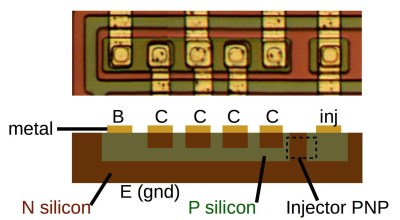It must be everyone’s birthday today because [Ken Shirriff] has come out with a gift for us. He’s done another pass at reverse engineering the 76477 Space Invaders sound chip from the 1970s and found it’s full of integrated injection logic (I2L), making it a double treat: we get to explore the more of this chip which made sounds for so many of our favorite games, and we explore a type of logic which was to be the successor to TTL until CMOS came along.

This article has a similar shape to his last one, first introducing I2L, followed by showing us what it looks like on the die, and then covering the different functional elements which make heavy use of it. The first of these is the noise generator made up of a section of shift registers and a ring oscillator. That’s followed by a noise filter which doesn’t use I2L but does use current mirrors. And lastly, he talks about the mixer which mixes output from the noise generator and elements covered in his previous article, the voltage-controlled oscillator, and the super-low frequency oscillator. Oddly enough, and as he points out, it isn’t an analog mixer. Instead, it just ANDs together the various inputs.
[Ken’s] no stranger to putting dies under the microscope. Check out our coverage of his talk at the 2016 Hackaday SuperConference where he shows us the guts of such favorites as the Z80 and the 555 timer IC.













